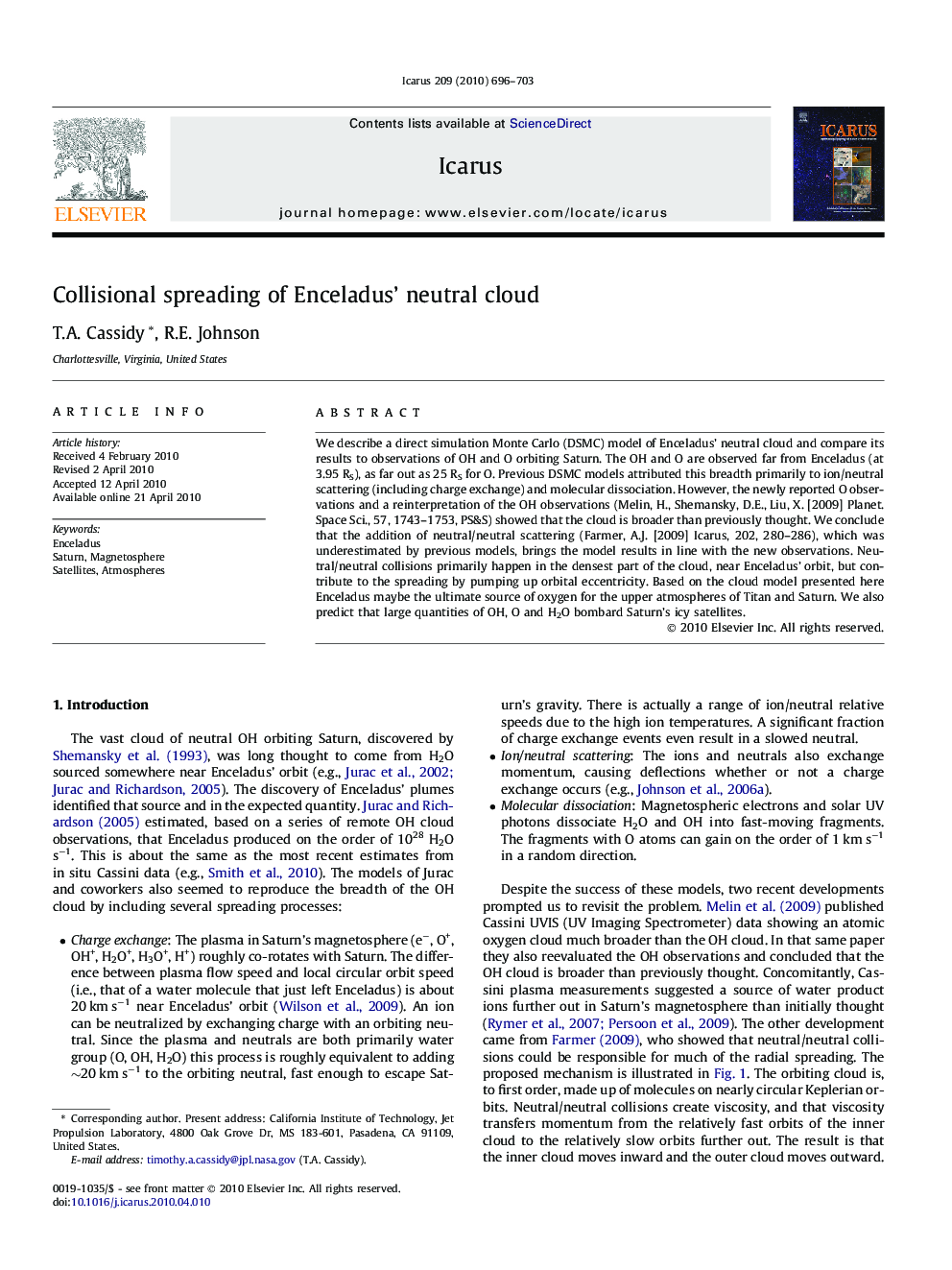| Article ID | Journal | Published Year | Pages | File Type |
|---|---|---|---|---|
| 1774037 | Icarus | 2010 | 8 Pages |
We describe a direct simulation Monte Carlo (DSMC) model of Enceladus’ neutral cloud and compare its results to observations of OH and O orbiting Saturn. The OH and O are observed far from Enceladus (at 3.95 RS), as far out as 25 RS for O. Previous DSMC models attributed this breadth primarily to ion/neutral scattering (including charge exchange) and molecular dissociation. However, the newly reported O observations and a reinterpretation of the OH observations (Melin, H., Shemansky, D.E., Liu, X. [2009] Planet. Space Sci., 57, 1743–1753, PS&S) showed that the cloud is broader than previously thought. We conclude that the addition of neutral/neutral scattering (Farmer, A.J. [2009] Icarus, 202, 280–286), which was underestimated by previous models, brings the model results in line with the new observations. Neutral/neutral collisions primarily happen in the densest part of the cloud, near Enceladus’ orbit, but contribute to the spreading by pumping up orbital eccentricity. Based on the cloud model presented here Enceladus maybe the ultimate source of oxygen for the upper atmospheres of Titan and Saturn. We also predict that large quantities of OH, O and H2O bombard Saturn’s icy satellites.
